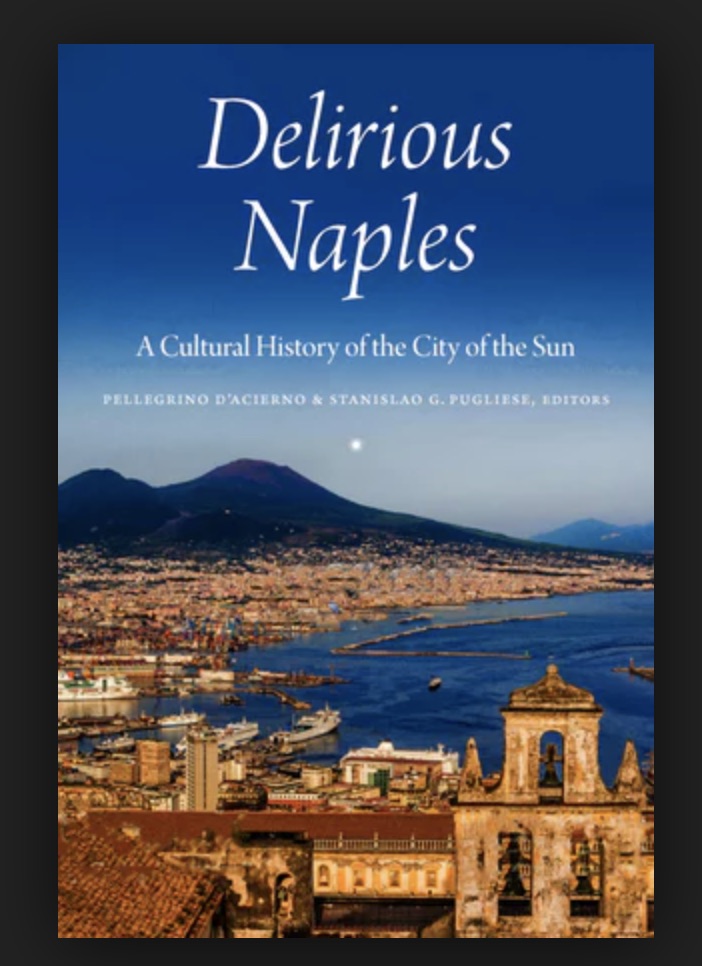 In the year and a half that I studied abroad in Florence, Italy, I didn’t get to go to Naples once. I’ve heard you can find the best pizza in Italy there—or any kind of delicious Italian cuisine—and that the streets overflow with curiosities and history. The tourist vision of Naples is what most of us see; millions of people venture there to sit in churches, admire Roman ruins, enjoy the sun.
In the year and a half that I studied abroad in Florence, Italy, I didn’t get to go to Naples once. I’ve heard you can find the best pizza in Italy there—or any kind of delicious Italian cuisine—and that the streets overflow with curiosities and history. The tourist vision of Naples is what most of us see; millions of people venture there to sit in churches, admire Roman ruins, enjoy the sun.
Not many people think to go deeper. Before reading Delirious Naples: A Cultural History of the City of the Sun, my image of Naples was only a superficial one. It was just another city that I’ve never seen. However, in sifting through the various works by authors who have such a deep connection and interest in this “paradoxical” place, it becomes clear that there is more to uncover there than just a really good meal and a nice spot to take a selfie.
There’s trash and treasure, old and new, foreign and familiar, and many more polar opposites that contribute to its reality as an enigma. In order to get more familiar with the concepts behind the authors’ musings, I asked editors Pellegrino D’Acierno and Stanislao G. Pugliese some questions that came to mind while browsing the diverse (yet similar) chapters.
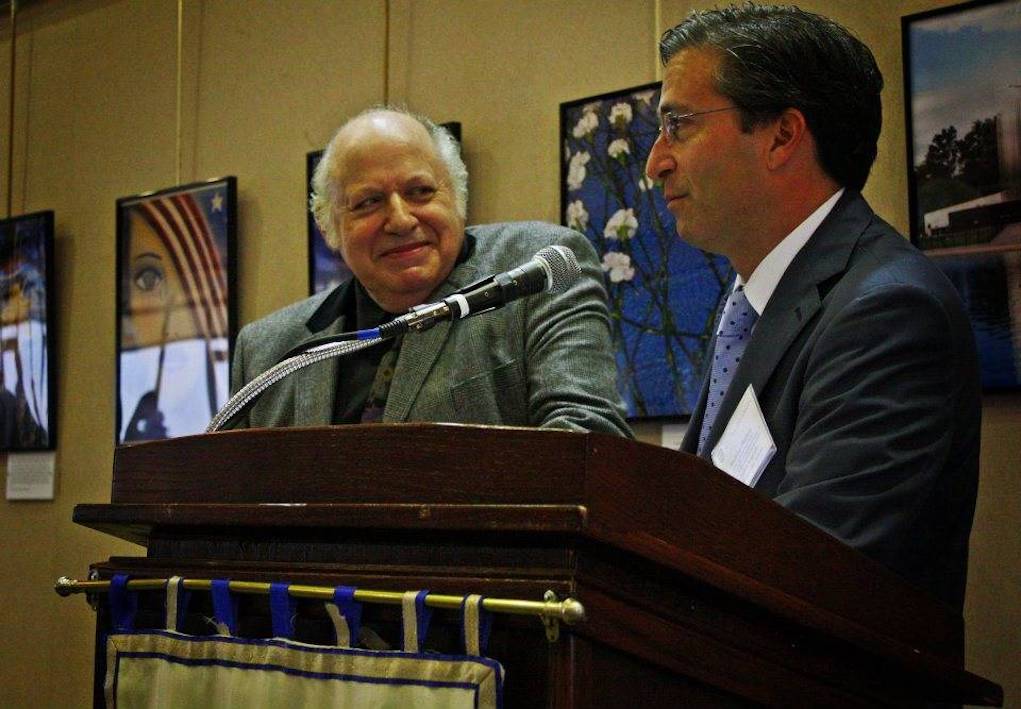
Why, in your opinion, is Naples a paradox and an enigma more so than other cities? Many writers have commented on the strange relationship citizens have with their own cities in Europe – namely, that they are such a mix of the ancient and the modern. What makes Naples specifically so unique in all this?
SP: “In its third millennium of existence, Naples challenges us to re-think the history and nature of cities. Like the tufa that is the substrate of the city, it absorbs everything and everyone that comes to its shores. It’s a city in a perpetual back-and-forth between economic and political decline, while producing a vital and profound intellectual life and a brilliant and exuberant artistic, literary and urban culture. As noted in our introduction, Neapolitan thought and cultural/artistic creation are, to a great degree, concerned with coming to grips with the paradox constituted by Naples, and with the state of emergency informing its history and everyday life.
Therefore, this book is addressed to “lovers of paradoxes” and we have done our utmost to assemble a stellar cast of Neapolitan and American scholars, intellectuals, and artists/writers who are strong and open-minded enough to wrestle with, and illuminate the paradoxes through which Naples presents itself. Naples is a mysterious metropolis. Difficult to understand, it is an enigma to outsiders, and also to the Neapolitans themselves. Its very impenetrableness is what makes it so deliriously and irresistibly attractive. The essays attempt to give some hints to the answer of the enigma, without parsing it into neat scholastic formulas. In doing this, the book will be an important means of opening Naples to students, scholars and members of the community at large who are engaged in “identity-work.”
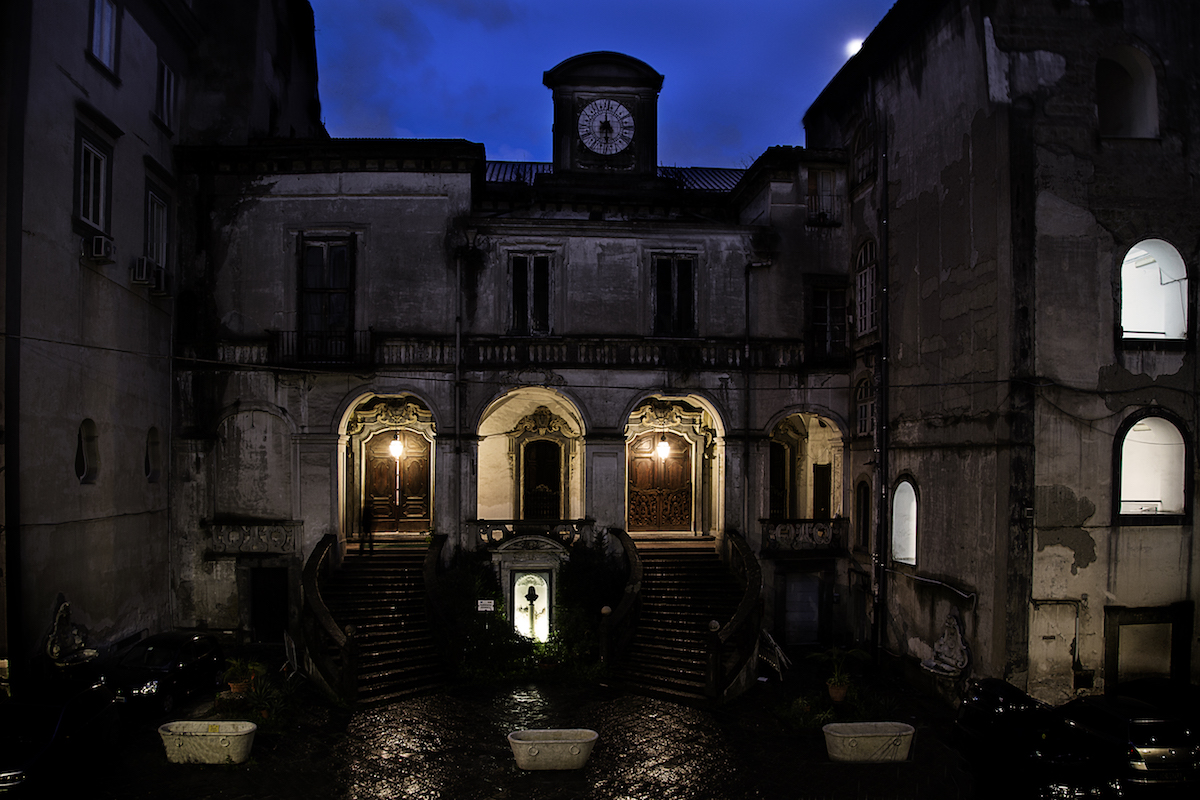
Why “delirious” Naples? Would you suggest that the two words are synonyms?
SP: Naples has always been a city in crisis, a “panic city,” as a result of its vulnerability both to acute shocks and chronic stresses. In the first we find eruptions of Vesuvius, earthquakes, cholera outbreaks, the aerial bombings in 1943–44 by the Allies during World War II, compounded by the ground-level devastation inflicted by the German occupation. In the second we can recall its endemic poverty, its congestion and traffic jams, its garbage crises and illegal toxic waste dumping, and above all, its culture of violence that has come to be organized into a system by the Camorra as documented by Roberto Saviano in Gomorrah (2006).
Therefore, requiems for Naples have been constantly proclaimed, often by rephrasing its canonic proverb, “See Naples and Die.” Typical are such headlines as “See Naples before It Dies” (1970) and, more vituperatively, “See Naples and Die (of the Stench)” (2008). They have in turn generated counter-requiems, the most effective being: “See Naples and Live” (often repeated, but most effectively by Alberto Arbasino in the 1990s) and, most recently, “See Naples and . . . You’ll Find a City on the Rise” (2014), the title of an article by Ondine Cohane published in the Guardian that, among other things, praises the turnaround effected by Mayor Luigi de Magistris, first elected in 2011.
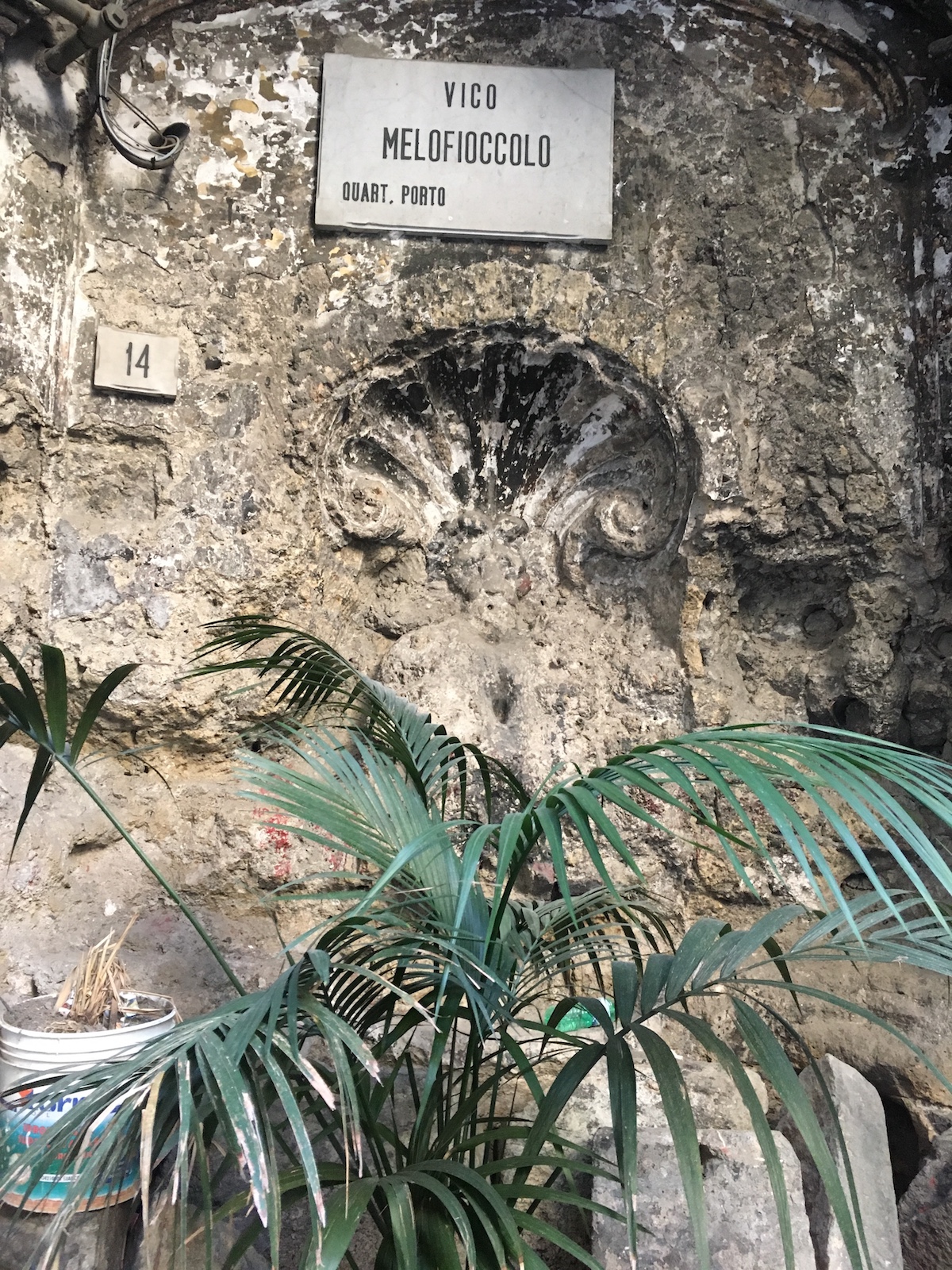
How does “delirious” relate to the economic state/fortune of the city at present?
SP: Ever since the G-7 summit of 1994 and the stewardship of Bassolino, and now Luigi De Magistris, Naples has confronted the possibilities and perils of neo-liberalism and globalization. As De Magistris asked in New York City a few years ago, “how is it possible that money can travel around the world with the click of a computer keyboard but human beings are denied the same freedom of movement?”
How does Naples “renew” itself while in decline?
SP: Naples is continually seeking “l’armonia perduta,” the lost harmony of Raffaele La Capria and so has a “Janus complex”– a radical self-consciousness, an obsession with its history, a sterile nostalgia for the glories of the past. The influx of contemporary migration, coupled with the city’s gift of reinventing itself, means that Naples is poised to confront and embrace the urban problems and potential of the 21st century.
There is a scene in John Turturro’s film Passione (2010) in which Sergio Bruni’s 1950s rendition of “O sole mio” blends into a version by a young Massimo Ranieri in the 1960s, followed by a contemporary interpretation by the Tunisian singer M’Barka Ben Taleb sung in Arabic.
Naples is a tricky subject for any artist. How is one to balance the two competing and contradictory images of the city? “See Naples and die!” was the cultural imperative of the grand tour and the age of Romanticism. Chaos, Camorra, and trash are the flip image. Seductive, exasperating, bewildering. A death-haunted city that flaunts its vitality; a melancholy city that revels in its celebrations; a city beloved and hated by its own inhabitants who left by the millions, scattered to the four corners of the world. A city marked by longing, loss and nostalgia that paradoxically is constantly reinventing itself.
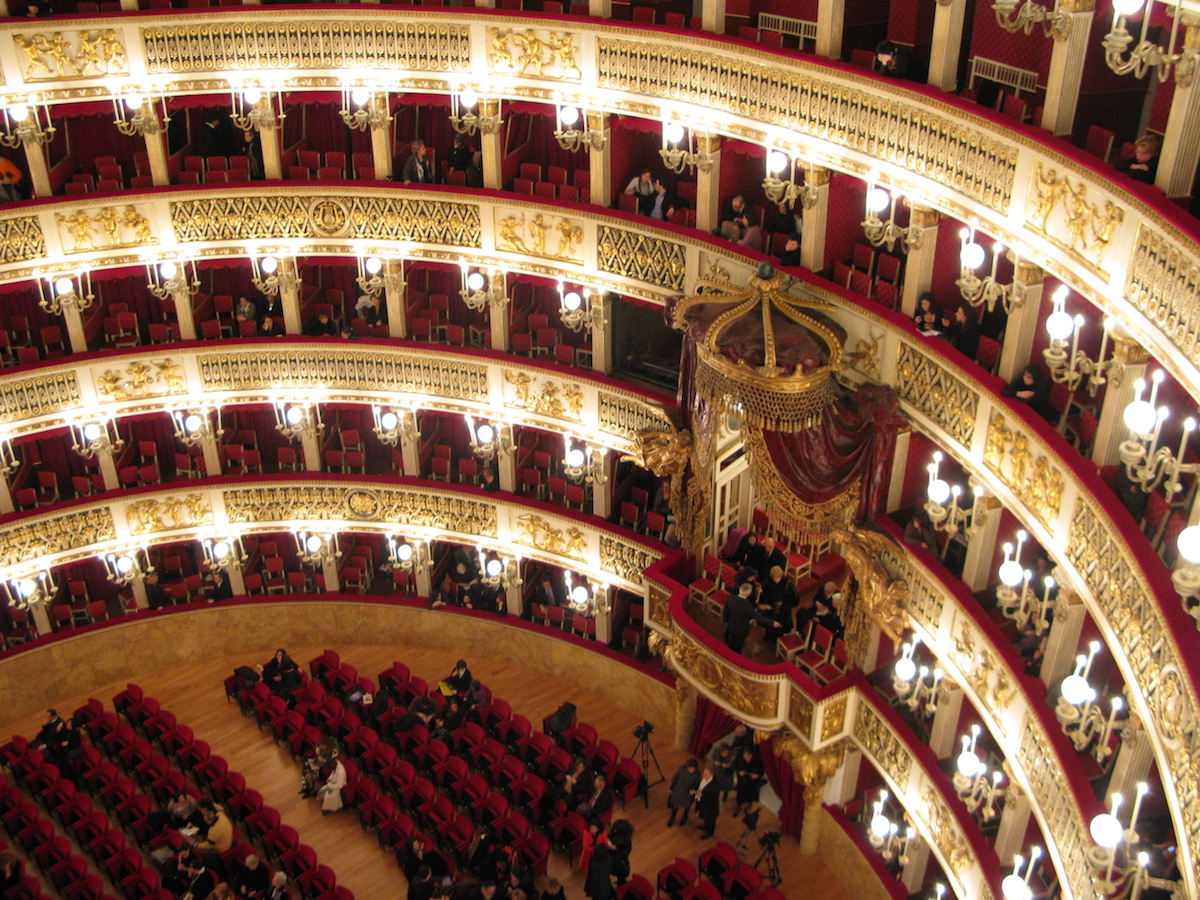
How does your own identity fit into all this?
SP: Pellegrino D’Acierno is tied to the city through filial devotion to his father, born outside the city, educated at the Università di Napoli. My father was from a town not far in distance from Naples (Montefalcione, AV) but really a different world. What ties me to Naples is the language (not dialect!) and what might be called an “elective affinity”—a decision to embrace and identify with a city that registers the entire range of humanity’s potential and problems.
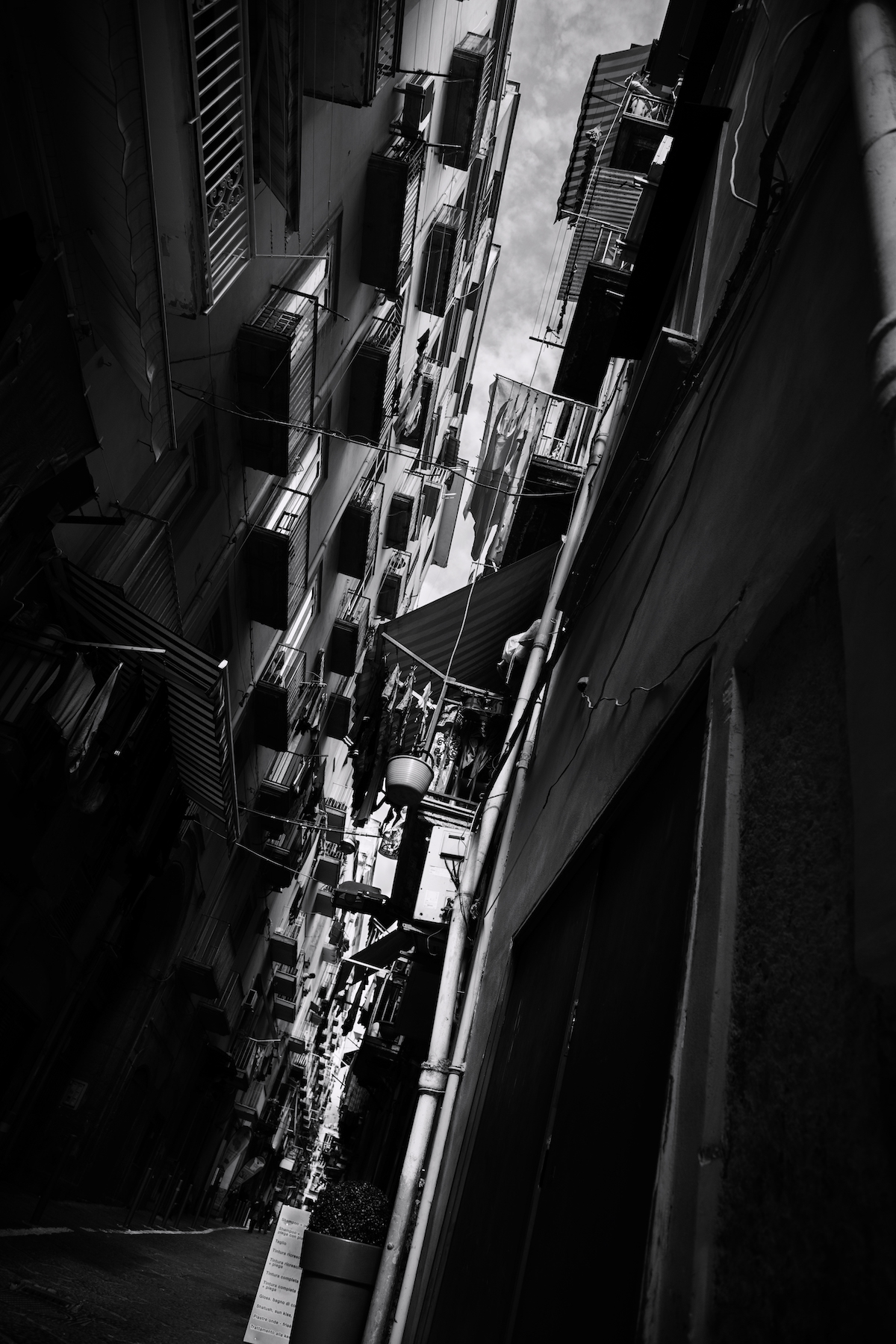
How would you connect Naples to NYC? What do you think of B. Amore’s project and the question she poses: “what tells more stories about a populace than what it throws away?” What does this artwork tell you about the connection between Naples and NYC?
SP: Naples and NYC exist in a mutually-reinforcing binary. Both port cities, both open to the world, both welcoming of the stranger. For two hundred years, immigrants have layered NYC with their cultures just as invaders have created a palimpsest in Naples over two millennia. B. Amore captures this in her artwork through the metaphor of the “birds of passage.”
Pellegrino D’Acierno: …We see Naples as the point of departure and New York as the point of arrival, as in the original mapping of the Great Immigration and as in B.’s remapping of it in the diorama in which Naples, represented by a diagram of Vesuvius in the shape of an M, is positioned as both a point of departure and return. But the art creates an imaginary space in which Naples and New York are constantly crisscrossing, transiting with those objects or fragments… In the imaginary space created by B. Amore’s art, Naples travels to New York and New York travels to Naples in a way that blurs the boundaries between them.
How do you connect the “aporia” of Naples to its “porosity”? How do you explain the choice of these words in relation to “Delirious Naples”?
SP: The philosophical concept of aporia—its meaning as “impasse” connects and disconnects it to the “passage” implicit to porosity—is the most effective way of articulating the entanglements and contradictions dictated by Naples. It places the reader/writer in a double bind that challenges him or her to live aporias as creation. Naples as an aporetic experience always defers or postpones its meaning(s) like Mount Vesuvius (currently) postpones its eruptions. Or, to put it in Neapolitan terms, Naples as the supreme aporetic city gives the pernacchio (as deliriously demonstrated by Eduardo De Filippo in “Il professore,” an episode in the film L’oro di Napoli), to those who wish to finalize and objectify its openness and to bypass its difference. Naples cannot be programmed.
“Porosity” (its etymology derives from “passage”), is a term coined by Walter Benjamin and Asja Lacis in “Naples,” an essay they coauthored in 1925. “Porosity” as an interpretative figure has generated numerous texts that describes the breaking of borders—sometimes violent—that define or de-define Neapolitan city life, and by extension its cultural and artistic practices. Benjamin described Naples’s porosity to imply not a classical but a Baroque interplay between private and public space; a psychogeography that lacks boundaries, but that is nonetheless bound together; as an urban space in which the soft or imaginary city and the hard or real city perpetually collide. Following Benjamin, diverse writers such as Ernst Bloch, Massimo Cacciari, and Ian Chambers have used porosity to generate powerful readings of Naples, and following in their footsteps is the anthology La città porosa: Conversazioni su Napoli (1993).

PD: The philosophical concept aporia—its meaning as “impasse” connects and disconnects it to the “passage” implicit to porosity—is the most effective way of articulating the entanglements and contradictions dictated by Naples. It places the reader/writer in a double bind that challenges him or her to live aporias as creation. Naples as an aporetic experience always defers or postpones its meaning(s) like Mount Vesuvius (currently) postpones its eruptions. Or, to put it in Neapolitan terms, Naples as the supreme aporetic city gives the pernacchio (as deliriously demonstrated by Eduardo De Filippo in “Il professore,” an episode in the film L’oro di Napoli), to those who wish to finalize and objectify its openness and to bypass its difference. Naples cannot be programmed.
“Porosity” (its etymology derives from “passage”), is a term coined by Walter Benjamin and Asja Lacis in “Naples,” an essay they coauthored in 1925. “Porosity” as an interpretative figure has generated numerous texts that describe the breaking of borders—sometimes violent—that define or de-define Neapolitan city life and by extension its cultural and artistic practices.
My interview with Professors Pugliese and D’Acierno was illuminating indeed. But all this still only scratches the surface. I’m obviously an outsider to Naples. But maybe this is what makes reading this book an altogether unique experience for someone who has never been there: you get to see the city without looking at it, hopefully free from stereotypes like the ones I had in my head before, and delve into something more meaningful than a superficial tourist experience.
***
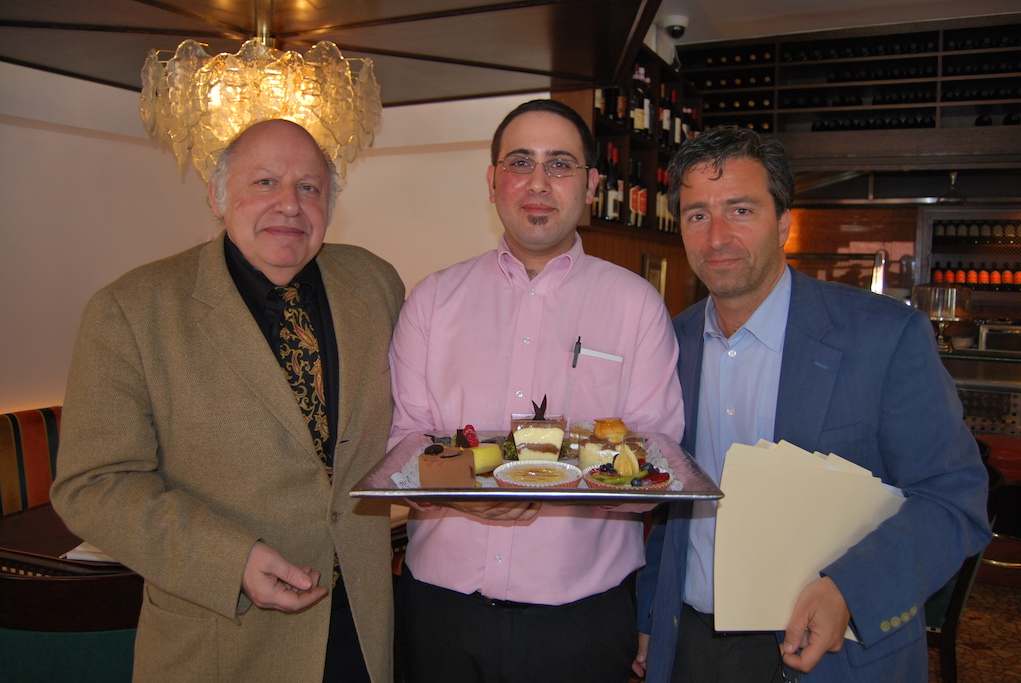
Pellegrino D’Acierno is Distinguished Professor Emeritus of Comparative Literature at Hofstra University and served as the inaugural Queensboro Unico Distinguished Professor of Italian Studies. He is the recipient of many awards, including a Guggenheim Fellowship and the Prix de Rome. His is the author, most recently, of a book of poems, The Fat Man Arpeggios. A second volume of poetry, Thirteen Ways of Crossing the Piazza, will soon be published by Guernica.
Stanislao Pugliese is Professor of History and the Queensboro Unico Distinguished Professor of Italian Studies at Hofstra University. He is the author of Bitter Spring: A Life of Ignazio Silone and is currently working on a new book, Dancing on a Volcano in Naples: Scenes from the Siren City.
Delirious Naples. A Cultural History of the City of the Sun
Edited by Pellegrino D’Acierno and Stanislao G. Pugliese
Contributor(s): Theresa Aiello, B. Amore, Andrea Baldi, Angelo Cannavacciuolo, Joseph Connors, Rose DeAngelis, Erri de Luca, John Domini, Simona Frasca, Jonathan Galassi, Fred Gardaphe, Patrizia La Trecchia, Ilaria Marchesi, Simone Marchesi, Nick Napoli, Salvatore Napolitano, Jason Pine, Joseph Rescigno, Gabriella Romani, Gioia Timpanelli, Terrence Ward, Robert Zweig, Valerio Caprara, Francesco Durante, Gregory Pell and Charles Sant’Elia
Fordham University Press, 2018












